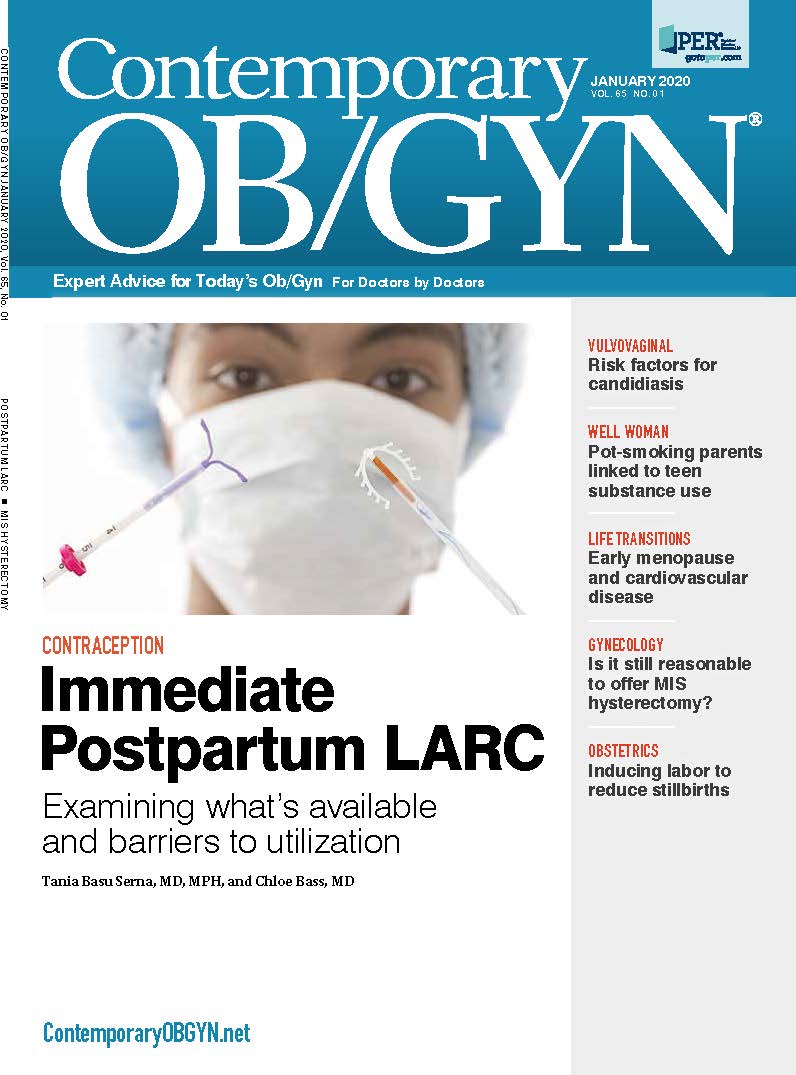Induction of labor and risk of stillbirth
A study published in BMJ suggests that inducing labor at no later than 41 weeks could be one of the few interventions that reduce stillbirths.
©tolikoff2013 - stock.adobe.com

A nationwide study by Swedish researchers suggests that inducing labor at no later than 41 weeks could be one of the few interventions that reduce stillbirths. While urging caution in interpretation of their results, the authors say the findings could be particularly important for management of nulliparas.
Findings from the study-which was stopped early because of a significantly higher rate of perinatal mortality in the expectant management group-were published in BMJ. SWEPIS (SWEdish Post-term Induction Study) was a multicenter, open-label, randomized superiority trial conducted at 14 hospitals in Sweden from 2016 to 2018.
Methods
Of the 2760 women enrolled, all of whom had low-risk, uncomplicated pregnancies, 1381 were randomized to induction at 41 weeks and 1379 to expectant management with induction at 42 weeks. In many centers in the UK and Scandinavia, induction is common no later than 42 weeks. Recent studies have shown a significantly increased risk of perinatal mortality and morbidity at 41 weeks, and of stillbirth beginning at 39 weeks.
The primary outcome of SWEPIS was a composite of perinatal outcome including one or more of stillbirth, neonatal mortality, Apgar < 7 at 5 minutes, pH < 7.00 or metabolic acidosis in the umbilical artery, hypoxic ischemic encephalopathy, intracranial hemorrhage, convulsions, meconium aspiration syndrome, mechanical ventilation within 72 hours, or obstetric brachial injury. The secondary outcome was perinatal mortality. The primary analysis was intent to treat.
Findings
No perinatal deaths occurred in the group induced at 41 weeks but six occurred in the expectant management group (5 stillbirths, 1 early neonatal death; P = 0.03). No differences were seen between the groups in the composite primary perinatal outcome (2.4% [33/1381] induction group; 2.2% [31/1379] expectant management; RR 1.06, 95% CI 0.6 to 1.73; P = 0.90). The proportion of cesarean deliveries, instrumental vaginal deliveries, or major maternal morbidities also did not differ between the groups.
The authors also found that in the induction group, there were fewer admissions to a neonatal intensive care unit, lower incidence of neonatal jaundice requiring therapy, and fewer infants with macrosomia. The rate of cesarean delivery did not differ significantly between the two groups.
Of note, the researchers said, all perinatal deaths occurred in the nulliparous women. “If this finding can be replicated in future studies,” they indicated,” it could mean that nulliparous women may require particular attention, and interventions such as labor induction might be even more important in this group.” The number needed to treat with induction of labor at 41 weeks to prevent one perinatal death was 230, which the authors said was lower than previous estimates.

S1E4: Dr. Kristina Adams-Waldorf: Pandemics, pathogens and perseverance
July 16th 2020This episode of Pap Talk by Contemporary OB/GYN features an interview with Dr. Kristina Adams-Waldorf, Professor in the Department of Obstetrics and Gynecology and Adjunct Professor in Global Health at the University of Washington (UW) School of Medicine in Seattle.
Listen
Study shows a healthy prenatal diet could be upstream obesity prevention strategy
December 26th 2024"Our findings support the recommendation of a healthy diet based on the current guidelines (as measured by the HEI) during pregnancy, since it may reduce patterns of infant growth outside reference ranges."
Read More
Early pregnancy cannabis use high in states with recreational legalization
November 11th 2024A population-based time-series analysis California before, during and after legalization show a rising trend in women using cannabis while pregnancy especially when the state has legalized the drug.
Read More
